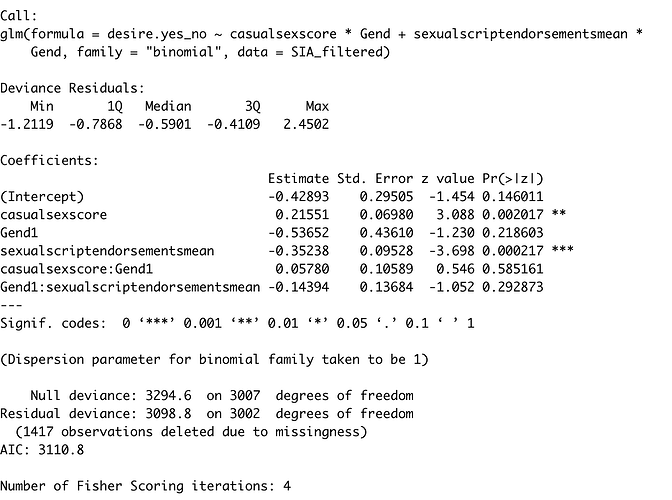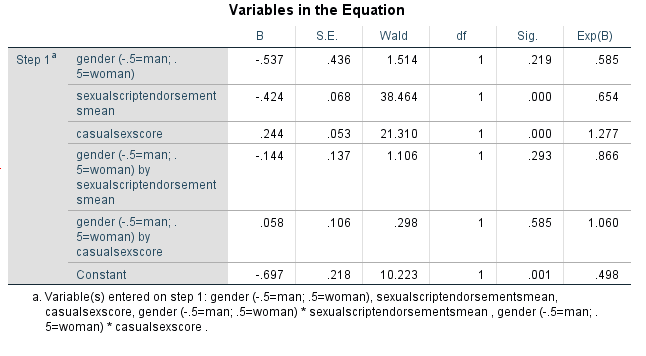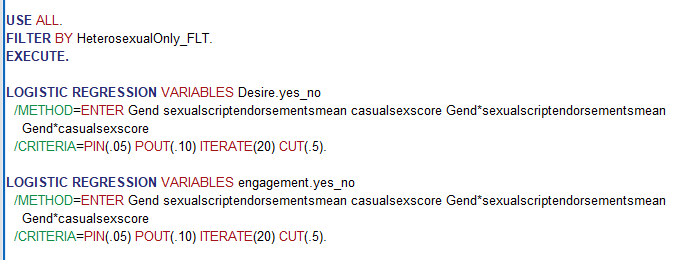Hello, I am currently trying to learn how to run a logistic regression with three main effects and two interaction terms in R studio for a study while comparing my results to my mentor’s results in SPSS. However, we seem to be getting different results for some the main effects, but the same results for the interaction terms. I think that I am writing the glm() code wrong, but I am brand new to R and not sure how to fix it. Please know I have spent HOURS trying to figure this out… and could really use your help!
For this study, we are researching how gender (moderator: Gend) moderates the effect of people’s endorsement of sexual scripts (first predictor: sexualscriptendorsementsmean) and attitudes towards casual sex (second predictor: casualsexscore) on their desire to engage in consensual non-monogamy (outcome: desire.yes_no).
We also want to run a second model with the same moderator and predictors, but with actual engagement as the outcome (second outcome: engagement.yes_no).
I attached my R studio syntax and output.
We have the exact same Beta, std error, and wald z-stat for the main effect of gender and the two interaction terms, but our main effects of casual sex attitudes and sexual script endorsement are different. The same thing happens for our second model with the outcome of engagement, to a greater extent as my output shows results for the main effects of casual sex and sexual scripts that are not significant but they are significant for the SPSS output.


